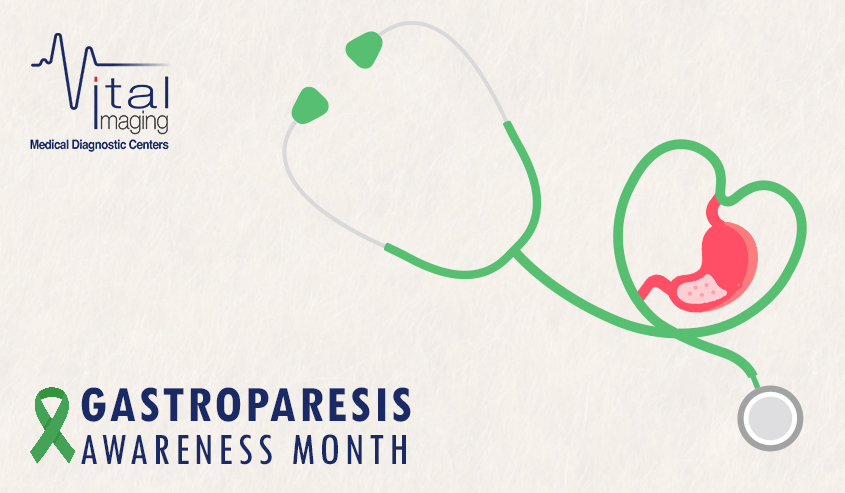Most people do not realize that August is Gastroparesis Month. What is Gastroparesis, you ask? The movement of food into the small intestine from the stomach is triggered by the Vagus nerve which causes the stomach muscles to contract and push the food on its way. When the Vagus nerve is damaged, Gastroparesis or a partial paralysis occurs and the movement of food is slowed down considerably. In the more severe cases, food movement stops altogether.
How Does the Disease Develop?
A healthy person’s stomach muscles can use strong contractions to pass food through the intestines. However, when someone suffers with Gastroparesis, the muscles become weak, thereby causing the stomach to struggle when it tries to empty itself. If the condition is left untreated, it can lead to fluctuations in your blood sugar levels as well as nutritional deficiencies. Additionally, frequent nausea and vomiting has been reported by some patients as well. Basically, it is a serious medical condition that is often diagnosed with the help of imaging and scans.
What are the Symptoms of Gastroparesis?
Depending on the study that you read, anywhere from half a million to 5 million Americans could be suffering from it. However, NIH research claims that these numbers may just be the “tip of the iceberg” so to speak. Research has shown that many individuals have undiagnosed Gastroparesis because they experience a broad range of symptoms that are similar to other diseases such as Celiac disease and GERD.
There are a number of symptoms to watch for, the most common of which include:
- abdominal bloating
- acid reflux
- excruciating abdominal pain
- feeling full even if you only ate a small amount
- lack of appetite
- nausea
- reduced appetite
- sudden weight loss
- vomiting undigested food
These symptoms often vary in frequency and intensity. Additionally, they may also be aggravated by drinking carbonated beverages and eating greasy foods, high-fiber foods, and rich foods. Healthy diet is an important aspect of combating digestive issues.
Digital Imaging and Diagnosing Gastroparesis
Gastroenterologists or physicians that specialize in diseases of the gastrointestinal tract and the liver, will use one of two procedures to diagnose Gastroparesis – an upper GI endoscopy or ultrasound as follows:
- Upper gastrointestinal (GI) endoscopy – the procedure visually examines your upper digestive tract (esophagus, stomach, and duodenum) by using a tiny camera attached at the end of a flexible tube that ranges in length.
- Ultrasound – high-frequency sound waves are used to produce images of your gall bladder or kidneys to determine if they might be causing your symptoms.
For more information about National Gastroparesis Month or to learn about the use of digital imaging in the diagnosis of this disease, call Vital Imaging at (305) 596-9992.

